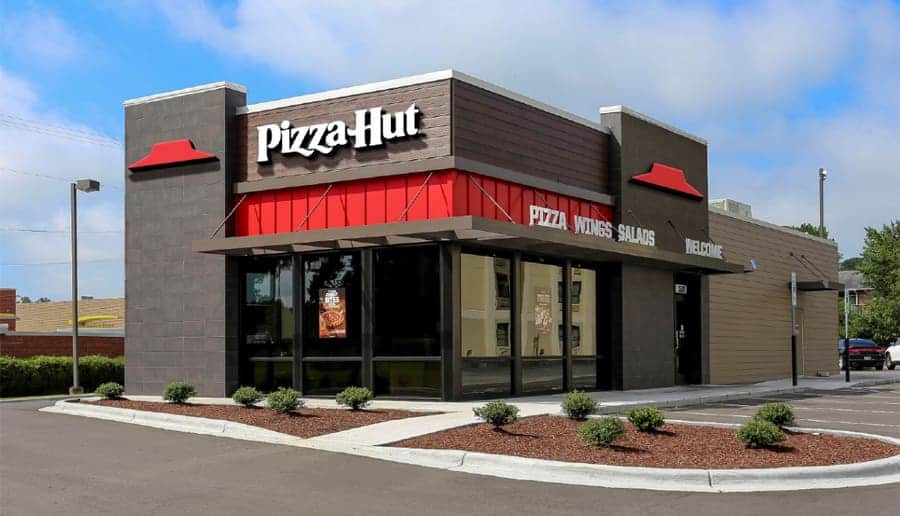
What Happened to Pizza Hut?
Pizza Hut was once the KING of the pizza industry worldwide.
But the beloved brand — known for its innovative menu and classic dining experience — is on the decline.
Quick Takeaways
- Pizza Hut was founded in 1958 by Dan and Frank Carney and quickly became the biggest pizza chain in the world.
- In the 1990s, Pizza Hut’s strategy was to release new products every few months to keep customers coming back. This led to some major successes, such as The Big Foot and Stuffed Crust Pizza.
- Over time, the number of new product sensations became sparse, and Pizza Hut sales declined.
- Domino’s overtook Pizza Hut as the pizza industry leader in 2017 due to its focus on delivery convenience.
- Thanks to a recent “newstalgia” campaign that focuses on combining old and new elements of Pizza Hut, unit growth is rising again for the company.
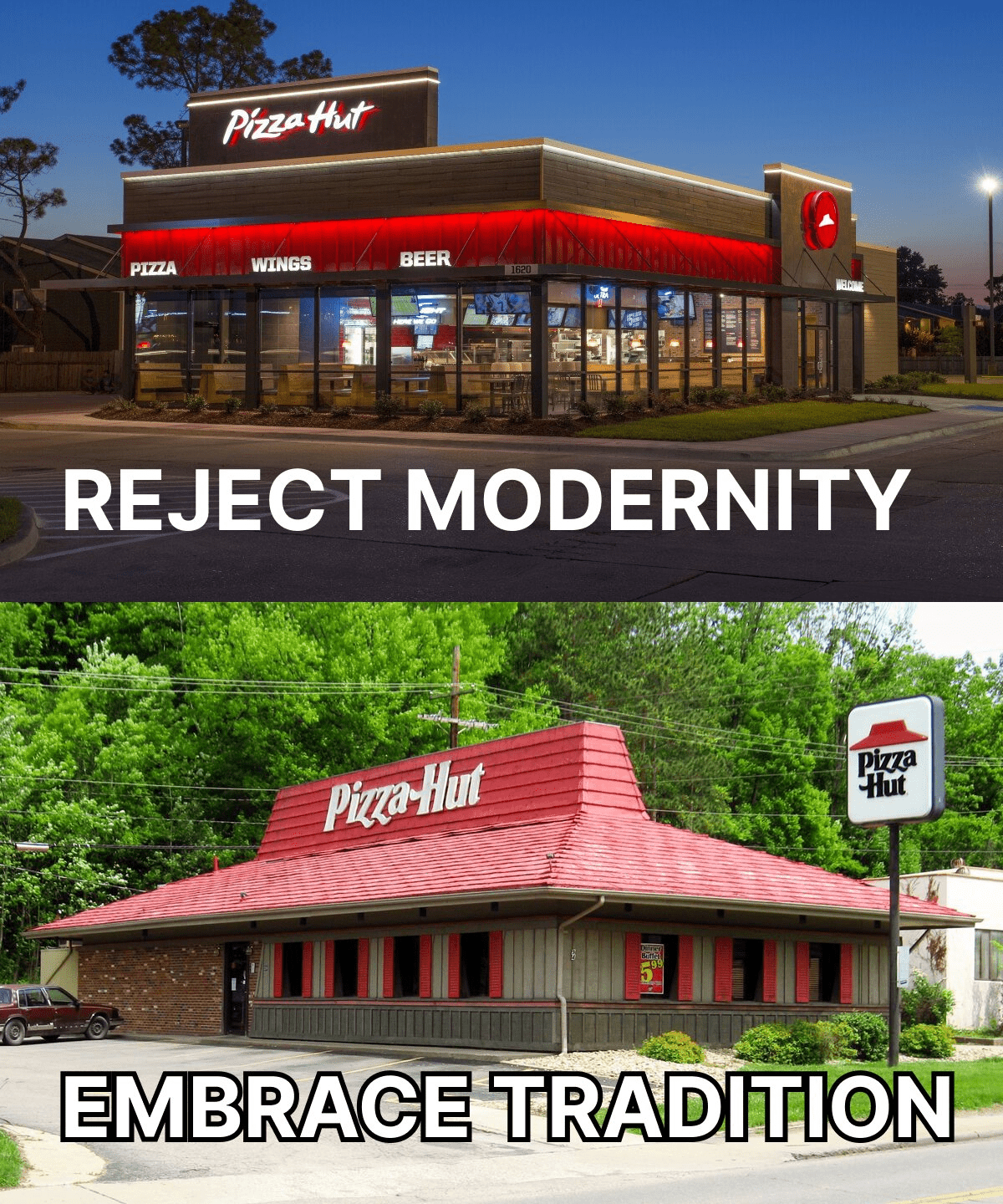
Pizza Hut’s Origins
Pizza Hut was founded in June 1958 by Dan and Frank Carney. The brothers borrowed $600 from their mother to try and build a pizza business (a relatively new food at the time) at Wichita State.
They wrote down a recipe on a napkin, got a used stove from a nearby restaurant, and named it Pizza Hut because the sign only had room for eight letters.
After originally franchising the concept out to friends and family, they eventually expanded regionally across Kansas. By the 1970s, it became the biggest chain in the world and went public on the New York Stock Exchange in 1972 after opening its 1,000th store.
Pizza Hut would remain the largest pizza business in the world for quite some time. It wasn’t until the 1990s, when Domino’s and Little Caesar’s began ratcheting up the pressure, that Pizza Hut would use tactics that ultimately led to their decline…
Pizza Hut’s Strategy
Pizza Hut’s strategy in the 1990s was simple: Create new products to drive revenue and keep customers coming back into their stores. To do this, though, they hired a product development team that released new inventions every ~2 months.
Each invention would have to go through a rigorous testing process before Pizza Hut would start selling it in its stores. Some ideas made it all the way through the process and would hit the market (like the whopping 3,000-calorie cheeseburger pizza).
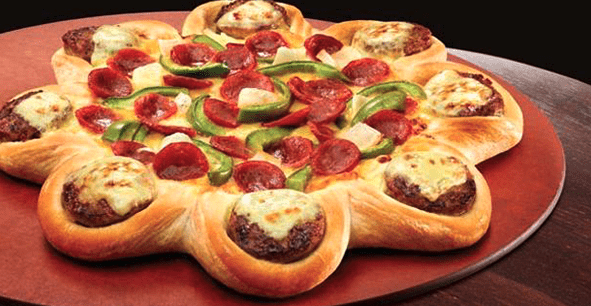
Other ideas, such as the “pizza in a cone”, or the “waffle crust pizza,” wouldn’t make the cut. But the major breakthroughs Pizza Hut did have would validate their strategy, such as:
The Big Foot
In 1993, Pizza Hut released The Big Foot, a massive, 2 feet long by 1-foot wide square pizza creation. This promotion helped lift Pizza Hut’s sales to $5.7 billion, with The Big Foot accounting for 18% of total sales.
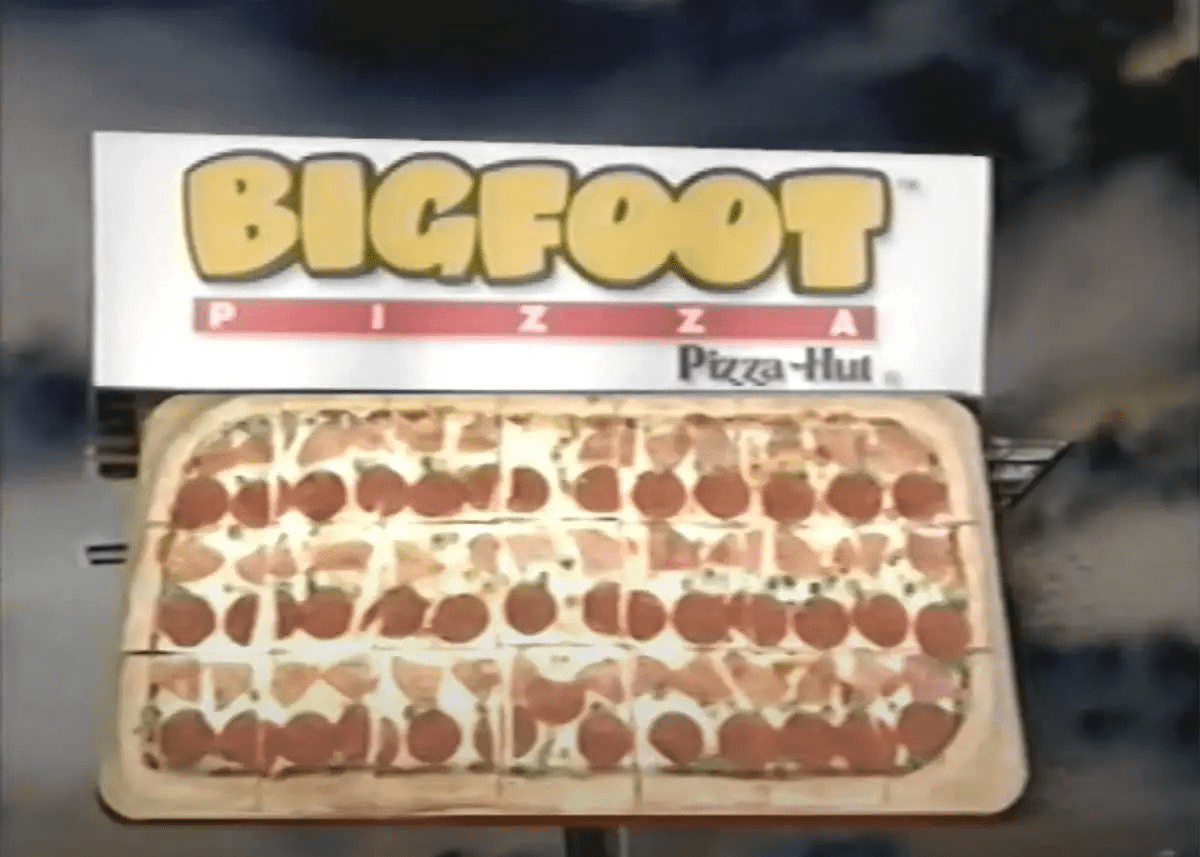
Stuffed Crust Pizza
In 1995, Pizza Hut released its famous stuffed crust pizza invention for the first time. A mainstay on the menu ever since its debut, sales of stuffed crust hit $1 billion in the first year, and helped boost Pizza Hut’s stock (owned by Pepsi at the time) by 50%!
This was the peak of Pizza Hut’s dominance, as they had 25% of the pizza market share globally.
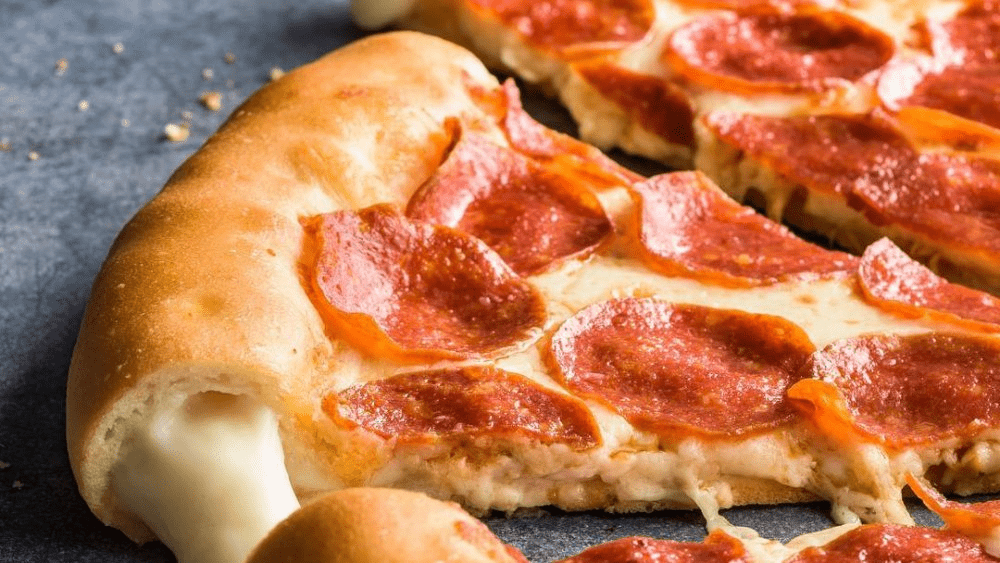
The Big New Yorker
In 1999, Pizza Hut released another hit invention, this time called The Big New Yorker.
Intended to replicate New York-style pizza, it had a 16-inch crust with slices so big you had to fold them in half to eat. Pizza Hut’s same-store sales rose 9% that year, largely thanks to this promotion.
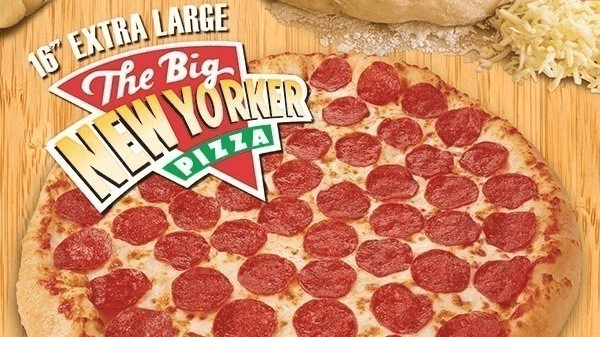
Pizza Hut’s Strategy Fades Away
As time went on, the number of new product sensations became sparse.
Then the Great Recession hit, and takeout pizza and frozen pizza surged ahead of dine-in offerings, Pizza Hut’s sales declined from 12% in 2009 alone.
With the rise of smartphones, consumers grew to value convenience above all else – which means whoever was easiest to order from that could deliver a product with good enough taste, would dominate.
Domino’s — who had already built a reputation for speedy delivery — had the technology ready. They had been trailing software as early as 1994 to let customers order pizza via the internet. In 2008, they released the pizza tracker app on both mobile and desktop, allowing customers to order their pizza and see where it was.
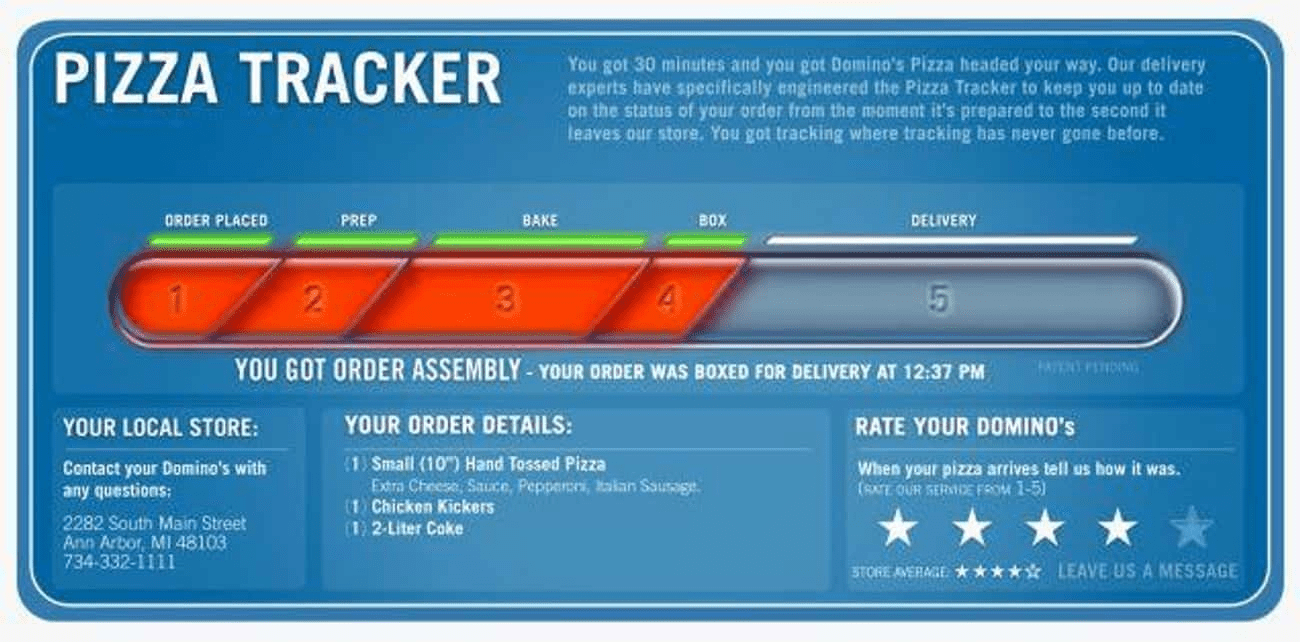
Despite gimmicks from Pizza Hut over the years, such as delivering pizza to outer space, the Whitehouse, and to a person on Mt. Kilimanjaro, the fact of the matter is that Pizza Hut’s brand wasn’t associated with delivery (or technology).
Pizza Hut was known for great products with an awesome dine-in experience that families could enjoy together.
The New Pizza Franchise King
In 2017, what was once unthinkable had become reality — Domino’s overtook Pizza Hut as the pizza industry leader for the first time. Pizza Hut’s share of the market had dipped below 14%, down over 11% from its high of 25% in 1995.
And with 40% of their stores still built for dine-in heading into covid, things got even worse:
- Net units fell -831 from 2019-2021 in the U.S.
- Corporate announced 500 units would close between 2019 – 2021
- NPC International, the owner of 1,200 Pizza Huts, filed for bankruptcy in 2020
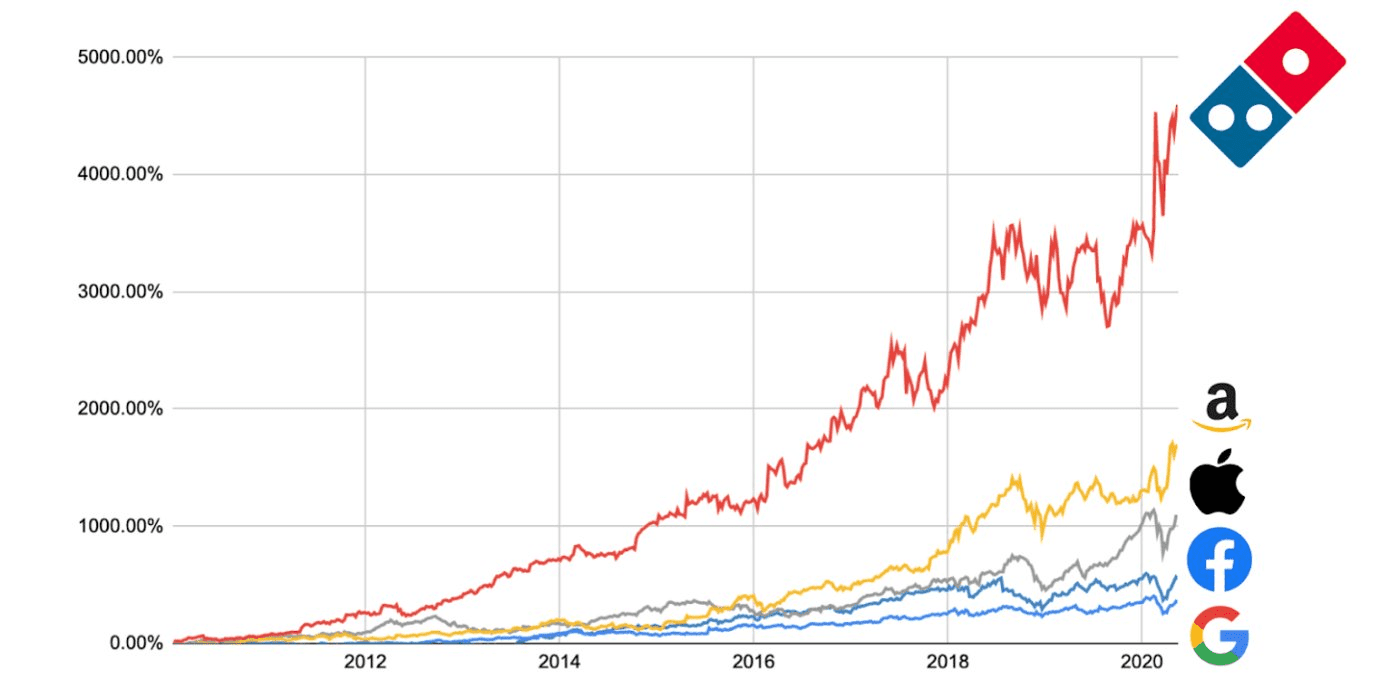
But Pizza Hut has hope — unit growth is on the rise again thanks to a new store model. Pizza Hut now prioritizes delivery and carryout and even has a “Hut Lane” for customers picking up online orders.
They’ve also launched a “newstalgia” campaign, one that focuses on combining the new with the old of Pizza Hut, in an attempt to win new customers while maintaining what made them lovable in the past (notice the logo is the same one from the ’90s).
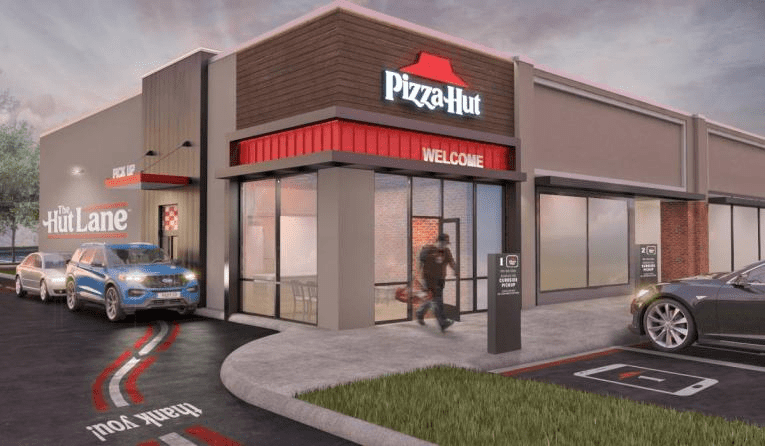
Pizza Hut’s CMO Lindsay Morgan has described the recent strategy as:
“Leaning back in a nostalgic way, but doing it in a way that’s relevant and fresh for today.”
Time will tell if they can find the right balance of nostalgia and modernity to reclaim the pizza crown…
